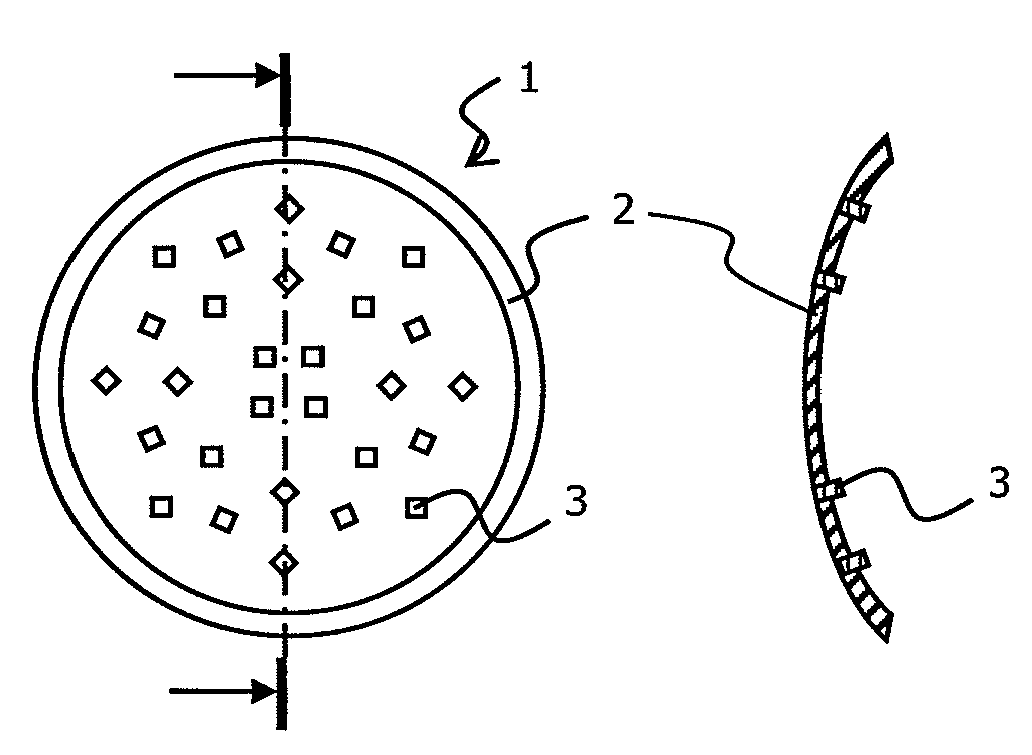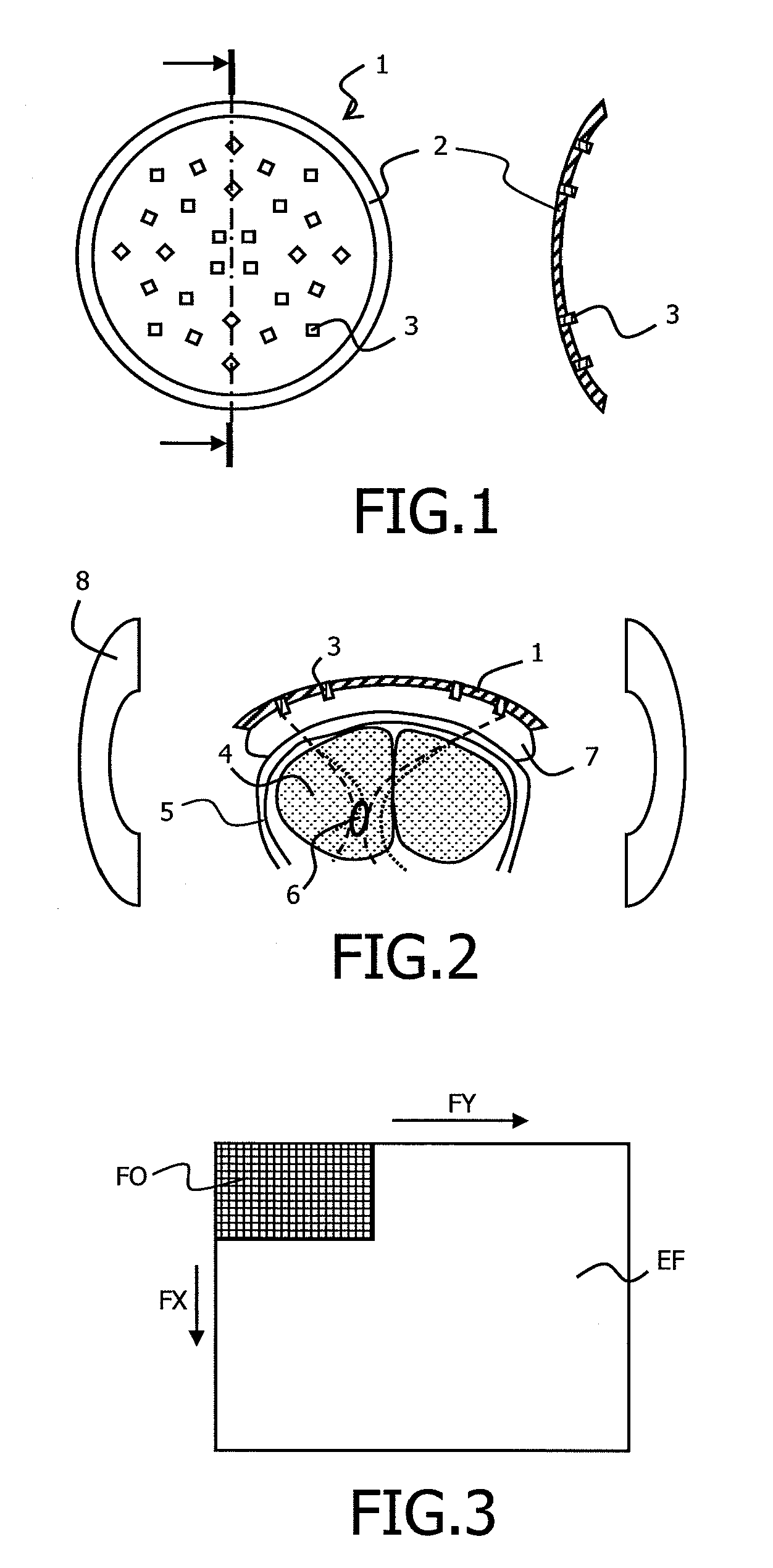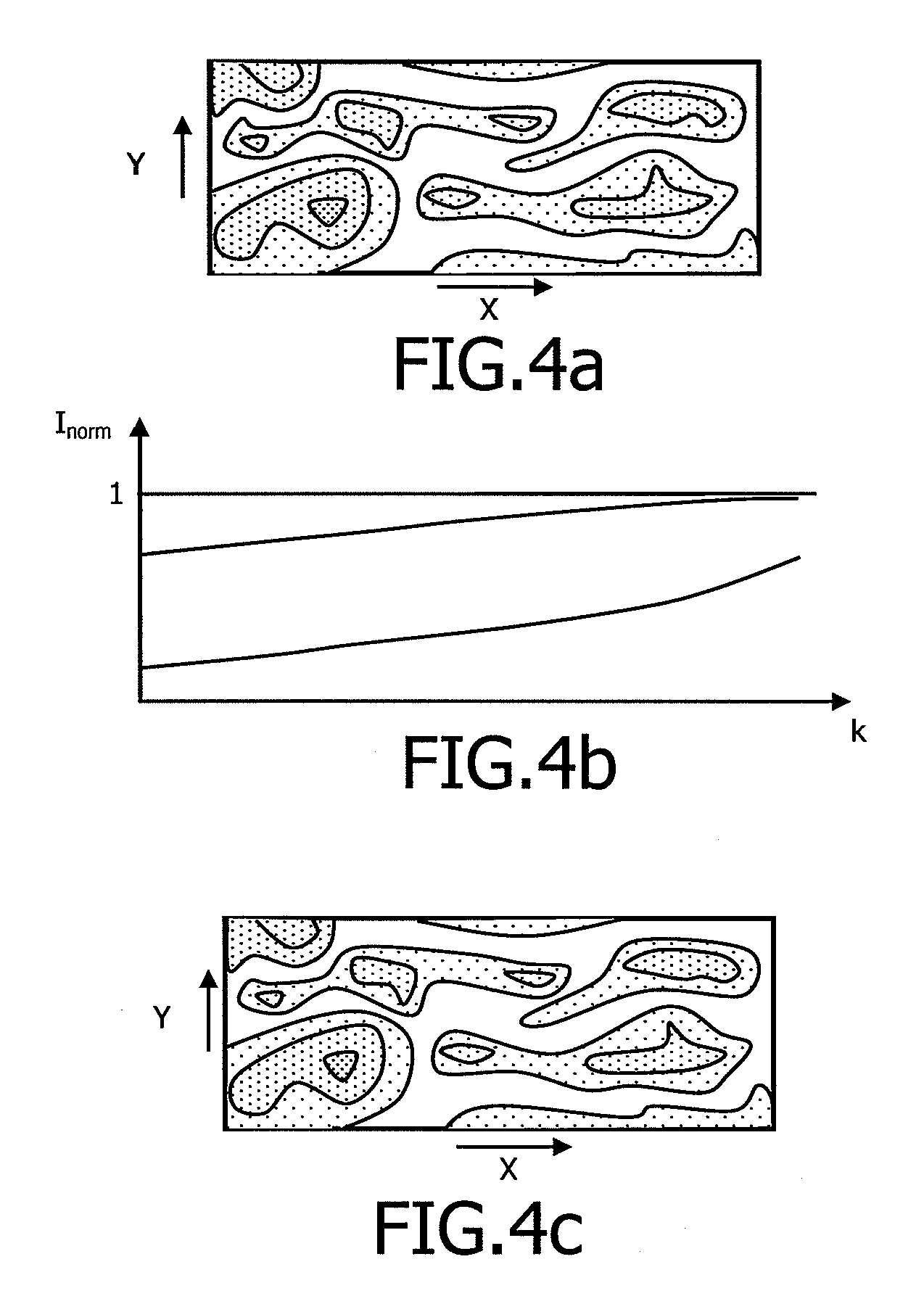Method for optimising the focussing of waves through an aberration-inducing element
- Summary
- Abstract
- Description
- Claims
- Application Information
AI Technical Summary
Benefits of technology
Problems solved by technology
Method used
Image
Examples
first embodiment
[0111]The first embodiment uses iterative modification of the phases within the phase distribution. The phase distribution is then advantageously described with the aid of spatial vectors describing the phases of the waves emitted for each n (1≦n≦N) of the network of N sources. The phase of the element n is then expressed for example by
αn=∑k=1KdkVkn
in which dk is a real number.
[0112]This base is preferably chosen to correspond to the spatial frequencies most usually observed within the variations of the aberrations introduced by the aberration-inducing element.
[0113]It so happens however, that for the targeted medical applications, the phase aberrations introduced by the biological structures, vary relatively slowly in the space. This is the case in particular of the human cranium. The optimal solution for the phase shifts can therefore be sought by modifying values associated with a limited number of vectors corresponding to a limited number of spatial frequencies. The principle th...
second embodiment
[0143]In the invention, a direct inversion from the perturbation measurements is used to determine an optimal phase distribution.
[0144]It is in fact theoretically possible to estimate the optimal phase shift between two transducers from a plurality of measurements of the intensity of a perturbation generated by the interference of the waves emitted by these two transducers. In fact, the intensity generated by superimposition of the two beams in amplitude modulated by the cosine of the relative phase difference between the two transducers.
[0145]Thus, when two monochromatic beams s1(t)=aei( ωt) and s2(t)=bei( ωt+φ) interfere at a point, the intensity generated is:
I=a2+b2+2ab cos φ=A+B cos φ
[0146]It is therefore possible to determine the phase φ by modulation intensity. If we add an additional phase shift x to signal s2, we get an intensity modulated by a cosine as a function of x:
I(x)=A+B cos(φ+x)
[0147]From at least three measurements of I(x), modifying x at each measurement, it is th...
PUM
 Login to View More
Login to View More Abstract
Description
Claims
Application Information
 Login to View More
Login to View More - R&D
- Intellectual Property
- Life Sciences
- Materials
- Tech Scout
- Unparalleled Data Quality
- Higher Quality Content
- 60% Fewer Hallucinations
Browse by: Latest US Patents, China's latest patents, Technical Efficacy Thesaurus, Application Domain, Technology Topic, Popular Technical Reports.
© 2025 PatSnap. All rights reserved.Legal|Privacy policy|Modern Slavery Act Transparency Statement|Sitemap|About US| Contact US: help@patsnap.com



